- Home
- Julian Stockwin
Stockwin's Maritime Miscellany Page 18
Stockwin's Maritime Miscellany Read online
Page 18
Nearly 250 sailors found themselves struggling in the icy waves. Those who tried to swim to shore were smashed against the rocks. Eventually around 100 survivors managed to climb into the rigging, which protruded above the waves, but as night wore on many fell off through exhaustion and were swept away in the frigid waters.
All night people on shore at Herring Cove kept a grim vigil by the light of bonfires. They were so close to the wreck that they could hear the hopeless cries of the weakening survivors, but could no nothing.
The following morning a 13-year-old boy named Joe Cracker set out from the shore in a small skiff and with great courage and skill managed to bring it to the wreck and take off two men. His example inspired others, and shortly afterwards the rest were rescued, but just 12 out of 250 of the ship’s company had survived.
Edward, Duke of Kent, then resident in Halifax, personally thanked Cracker for his courage and asked him to name a reward. The boy requested a pair of warm corduroy breeches.
The location of the tragic sinking was named Tribune Head. A plaque at the headland at Herring Cove reads: ‘In memory of the heroism of Joe Cracker the fisher lad of 13 years who was the first to rescue survivors from the wreck of HMS Tribune.’
Eighteenth-century map of Chebucto Harbour and Halifax.
THE FUNERAL THAT BURIED A FLEET
In 1566 in the Baltic Sea a fleet of the Swedish navy met a fleet of ships from Denmark and Lübeck in a battle during which a Danish commander was killed by a cannonball. A storm was brewing and, as was the custom, the opposing forces ceased fire and went their separate ways. The Swedish fleet disappeared into the Stockholm archipelago and the Danish-Lübeck forces formed a funeral procession and set course for the nearest Danish territory, the island of Gotland. The Lübeckians had wanted to go initially to Danzig, where their battle-scarred ships could be repaired, but the Danes insisted that the dead must be buried first.
Arriving off the Gotland port of Visby, Jens Truidson, the Danish Vice-Admiral commanding the fleet, was advised by harbour authorities not to anchor in the roadstead as it was a foul ground, and in anything other than a flat calm there was a great risk of anchors dragging. But the admiral, determined on honouring their dead, ignored the warning and ordered his 39 ships to anchor. They then began the gruesome business of ferrying the dead ashore.
The following day a burial service was held in Visby Cathedral, and the squadron prepared to leave the next morning. The weather was calm initially, but then the sky went a strange colour and the sea seemed to shimmer beneath the ships. That night Visby was hit by a terrible storm that lasted for six hours. Anchors were ripped from the seabed and cables snapped. The unwieldy ships of the Danish-Lübeck fleet collided with each other or were dashed to pieces on the jagged shoreline as they tried to sail away.
At daybreak the beach was covered with debris and dead bodies. More than one-third of the fleet was gone: 15 ships had sunk and the storm had claimed between 5,000 and 7,000 lives. (To put this into perspective, the population of Stockholm at the time was 9,000.) Among the dead were Admiral Truidson and his wife, two other admirals and the mayor of Lübeck; their remains were buried in Visby Cathedral. It was a hot summer and the people of Visby, fearing an epidemic could break out, hastily buried the rest of the dead in mass graves.
A Lübecker of 1540.
* * *
BROUGHT UP SHORT – forced to a standstill by a sudden reversal of fortune. DERIVATION: a vessel under way was said to be brought up short if she was forced to shudder to an emergency stop by dropping her anchors, for example on unexpectedly sighting a coast looming through a thick fog.
* * *
A DOCKYARD’S NIGHTMARE
With so many combustibles around, fire was an ever-present danger in a dockyard. In 1774 Portsmouth dockyard, Britain’s biggest at that time, had already suffered two serious conflagrations in living memory.
In the late afternoon of 7 December fire broke out in the rope house. All but two of the workers had left the building by then, but once the alarm was raised hundreds of men quickly arrived on the scene, well aware that should a fire take hold there would be huge destruction. In addition to all the hemp, timbers, workshops and tools there were five ships in dry dock for repairs and a number of warships on slips in various stages of construction. Fortunately, although the rope house was destroyed, the fire was contained.
Initially the blaze was thought to have been an accident, but the evidence pointed to arson and a hunt began for the perpetrator. Suspicion fell on a man who was known as John the Painter, and an advertisement was placed in newspapers offering a reward for his apprehension.
Somewhat of a social misfit, John the Painter’s real name was James Hill, alias Hinde, alias Aitken. He had previously fled overseas to the American colonies to avoid arrest for a number of crimes. There he had consorted with political revolutionaries and come up with the wild plan of setting fire to England’s dockyards.
On 10 March 1775 a shackled Hill was transported to the dockyard, the scene of his crime. A public gallows had been erected around the mizzenmast of HMS Arethusa. Before he died, Hill apologised for his actions and exhorted the authorities to exercise ‘great care and strict vigilance’ at the dockyards in future. A crowd of 20,000 watched his execution, and then the lifeless body was placed in a gibbet and rowed across the harbour entrance to Blockhouse Point and suspended there for all to see.
The fate of the remains of Jack the Painter, as he became known post humously, is uncertain. Rumour has it that sailors took down the skeleton and used it to pay an ale-house debt. A mummified finger supposedly cut from his hand was used as a tobacco stopper for many years in Portsmouth.
* * *
HAND OVER FIST – financial gain due to a rapid ascent up the ladder of success. DERIVATION: a skilled seaman developed great speed and agility for climbing aloft into the rigging. This involved considerable upper body strength, with the free hand passing over the fist in which the rope was clenched as he swarmed up the rigging.
* * *
TOLL FOR THE BRAVE
HMS Royal George was a first-rate of 100 guns that had served in many battles including the American War of Independence. Flagship of Rear Admiral Richard Kempenfelt, and captained by Martin Waghorn, she was anchored at Spithead on 29 August 1782. Almost the entire crew were on board, together with many visiting women and children as well as dockyard craftsmen.
At 7 a.m. in the morning stores tenders arrived carrying dockyard plumbers and carpenters to install a cistern pipe to provide water for washing the decks. In order for this to be done the ship needed to be heeled over so that a hole could be bored into the side. The lower deck larboard guns were run out and the starboard guns pulled back inboard. Unfortunately this did not give a sufficient heel for the plumbers and shipwrights to work, so the upper deck guns and some of those on the middle deck were repositioned.
After breakfast Captain Waghorn was on the upper deck when the carpenter announced that the ship appeared to be settling in the water. Orders were given to move the guns to right the ship, but suddenly she sank so quickly that over 900 people perished, including the admiral.
Around 300 survived, among them Captain Waghorn. Many of those who lost their lives in the wreck were laid to rest in the old burial grounds of Haslar Hospital at Gosport, possibly including the remains of Kempenfelt himself.
The cause of the tragedy was never established. One theory was that the hull was so rotten that it gave way while being worked on; another possible reason put forward was that the carpenter introduced too much heeling, bringing her gunports below water. At the subsequent court martial evidence supported both arguments but failed to rule out either.
The tragedy inspired the poet William Cowper to write a lament, entitled ‘Toll for the Brave’:
Brave Kempenfelt is gone
His last sea fight is fought
His work of glory done
It was not in the battle
No tempest
gave the shock
She sprang no fatal leak
She ran upon no rock
His sword was in his sheath
His fingers held the pen
When Kempenfelt went down
With twice four hundred men.
SHIPWRECK STRAIT
Bass Strait, separating mainland Australia from Tasmania, is among the most lethal stretches of water in the world, twice as rough as the English Channel. The infamous strait has claimed hundreds of ships and more than 1,000 lives, but many ship captains risked the dangerous passage in order to shorten by weeks their voyage time from the west.
Sydney Cove was wrecked on Preservation Island in Bass Strait on 28 February 1797. A party of 17 men led by first mate Hugh Thompson set off in the ship’s longboat, heading for Port Jackson, 645 km away; the rest of the crew, including the captain, set up a rough shelter ashore to await rescue. After a few days at sea Thompson’s boat was wrecked and the seamen found themselves cast ashore in a totally unknown land with few provisions. Their only hope was to try to reach Port Jackson some 600 km away by foot, following the coast. Finally, in May the last three survivors, near death, managed to signal an offshore fishing boat which took them to Sydney. Two ships were dispatched to collect the men remaining on Preservation Island, but on their return journey one of these vessels was wrecked with the loss of the crew and eight of the Sydney Cove survivors.
The female convict ship Neva sailed from Cork, Ireland, on 8 January 1835 bound for the penal colony of Sydney. Four months later she entered Bass Strait with a gale on her port quarter. In the early hours of 14 May the dreaded cry rang out, ‘Breakers ahead!’ She struck rocks and her rudder was carried away, then her bow hit the main reef and she swung broadside on. Heavy seas broke over the ship. The straining of the hull caused prison stanchions to give way and the terrified female prisoners and children swarmed on deck. Some of them were washed overboard; others broke into the rum stowage and drank themselves insensible. Four hours after striking the rocks the ship broke up and sank. Of the 240 who had left Cork only 15 survived.
Cataraqui was a barque transporting assisted emigrants from England to Port Phillip (present-day Melbourne) in the colony of Victoria. She set sail under the command of Captain Christopher Finlay on 20 April 1845 with 376 emigrants and 41 crew. As the vessel entered Bass Strait after six long months at sea, those on board were eagerly looking forward to making land, having been tossed about by a storm for several days. Suddenly, the ship struck on rocks and quickly sank. Eight crew and one emigrant managed to reach shore by clinging to wreckage. Daylight presented the horrible scene of hundreds of bodies strewn along about 3 km of beach. The castaways were stranded for five weeks, living with a party of seal hunters, before they were rescued by a cutter and taken to Melbourne. The loss of Cataraqui is Australia’s worst peacetime sea disaster.
In 1871 Loch Leven became another victim of Bass Strait.
THE MOTHER OF ALL SHIP EXPLOSIONS
The French flagship L’Orient was a three-deck floating fortress of 4,500 metric tons and with a crew of 1,100. At the Battle of the Nile she first came under attack from the guns of HMS Bellerophon, then HMS Alexander and HMS Swiftsure continued a savage bombardment.
Aboard the flagship Vice-Admiral Brueys showed the utmost personal courage. Already suffering from a head wound, he was hit by a cannonball that blew off both his legs. Refusing to go below, he had a tourniquet bound around the stumps and, propped up in a chair on the quarterdeck, he continued to issue orders. Brueys was spared the final ignominy of seeing his ship destroyed when a roundshot took off his head.
By about 9 p.m. the ship was ablaze aft, and fire spread up the rigging and mast like a gigantic torch illuminating the battle. The French gunners courageously continued firing, although they must have known their fate. Ships tried to move away to what they hoped would be a safe distance. At about 10 p.m. the fire reached the magazine and L’Orient exploded in an incredible spectacle, with blazing parts of the ship hurled hundreds of metres into the air.
After the explosion both sides fell into a stunned silence for about ten minutes and an eerie light pervaded the scene. The noise had been heard over 30 km away. The whole of Aboukir Bay seemed covered with mangled, wounded, scorched bodies. Of L’Orient’s crew only 100 or so survived by swimming from the blazing wreck; they were plucked from the sea by British sailors.
All the while Napoleon Bonaparte and his military staff were grimly watching the battle from a tower in Alexandria, 14 km away.
According to legend, Luc, the young son of Commodore Casa Bianca, the captain of L’Orient, obediently stayed at his post waiting for his father’s order to leave the ship – an order that never came, as he was lying unconscious below deck.
Felicia Hemans would later write the poignant verse:
The boy stood on the burning deck
Whence all but he had fled;
The flame that lit the battle’s wreck
Shone round him o’er the dead…
* * *
Who The Deuce Are You, Sir?
In the aftermath of the explosion a survivor appeared on the quarterdeck of Swiftsure, naked except for a cocked hat. ‘Who the deuce are you, sir?’ snapped Captain Hallowell. ‘Je suis de L’Orient, monsieur,’ came the response. He was Lieutenant Berthelot, who had managed to escape the flames by leaping into the sea. He had removed his heavy clothes before doing so and then realised that without them he would not be recognised as an officer. Hastily climbing back aboard, he fought his way back to where he had left his clothes, retrieved his hat and then jumped overboard again.
* * *
L’Orient explodes at the Battle of the Nile.
AUSTRALIA
Australian National Maritime Museum
2 Murray Street
Darling Harbour
Sydney
New South Wales
Telephone: +61 2 9298 3777
Open: daily except Christmas Day
The words of the country’s national anthem celebrate ‘a land girt by sea’ and Australians have always had a special connection with the water. Located on the largest natural harbour in the world, the Australian National Maritime Museum has seven main galleries of permanent exhibitions, including the early navigators who mapped the great continent and the long sea voyages of the first settlers. Of special significance in the wonderful fleet of ships and boats maintained by the museum is the replica of James Cook’s Endeavour. This vessel returned to Sydney in 2005 having completed 11 years of voyaging around the world and from time to time still takes to the water to bring alive eighteenth-century square-rig seamanship.
http://www.anmm.gov.au/site/page.cfm
BERMUDA
Bermuda Maritime Museum
The Keep
Royal Naval Dockyard
Sandys Parish
Telephone: 1-441-234-1418
Open: daily except Christmas Day
Bermuda’s largest fort, the Keep, was originally constructed to defend the Royal Naval Dockyard. Today this 2.5-hectare fortress is home to the Bermuda Maritime Museum, which chronicles the island’s maritime history from the early sixteenth century. The complex comprises seven bastions and eight buildings filled with artefacts and historic exhibits. On the lower grounds, in the cavernous Queen’s Exhibition hall, 4,860 kegs of gunpowder were once stored and the building’s floor is made of non-sparking bitumen. The crown jewel of the museum is the Commissioner’s House, which was completed in 1827. It was the world’s first cast-iron building; its girders, red brick and flagstones were shipped from England in the 1820s, while its 1-m thick walls consist of limestone quarried from the dockyard.
http://www.bmm.bm/
CANADA
The Maritime Museum of the Atlantic
1675 Lower Water Street
Halifax
Nova Scotia
Telephone: (902) 424-7490
Open: daily in the summer months, closed for major public holidays and on Mondays
in winter
This is the oldest and largest maritime museum in Canada. After a number of temporary locations the museum was established on the site of the historic William Robertson & Son Ship Chandlery and A.M. Smith and Co. Properties on the Halifax waterfront. Among this museum’s permanent exhibitions is the Days of Sail Gallery with ship models, images, charts and a sailmaker’s loft. A Royal Navy dockyard was founded in Halifax in 1758, and the museum’s Navy Gallery bears witness to its presence with such items as artefacts from the famous encounter nearby between Shannon and Chesapeake. Among the museum’s more modern items is its large collection of Titanic memorabilia.
http://museum.gov.ns.ca/mma/index.html
FRANCE
Musée de la Marine
Palais de Chaillot
17, place du Trocadéro
75116 Paris
Telephone: 33 (0)1 53 65 69 45
Open: daily except Tuesday and national holidays
The museum traces its origins back to 1748 when Louis Henri du Monceau, general inspector of France’s navy, asked King Louis XV whether he would be prepared to donate his personal ship and shipyard-machinery models for a collection to be exhibited in the Louvre. Now housed in the Palais de Chaillot, a stone’s throw from the Eiffel Tower, the museum’s highlights include its ship model collection and Napoleon’s state barge, as well as paintings of naval battles, uniforms and navigational instruments. Annexes at Brest, Port-Louis, Rochefort and Toulon also celebrate France’s truly rich seafaring heritage with specialist collections.
http://www.musee-marine.fr/index.php?lg=en&nav=1&flash=1

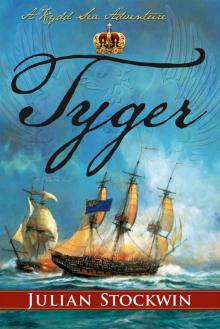 Tyger: A Kydd Sea Adventure (Kydd Sea Adventures)
Tyger: A Kydd Sea Adventure (Kydd Sea Adventures) Seaflower - Kydd 03
Seaflower - Kydd 03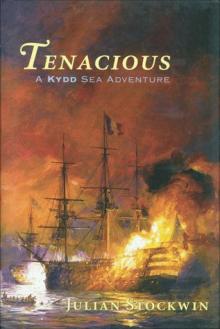 6-Tenacious
6-Tenacious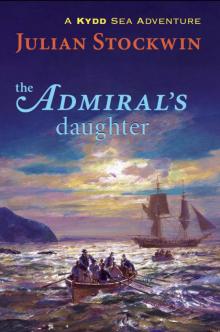 The Admiral's Daughter
The Admiral's Daughter Mutiny k-4
Mutiny k-4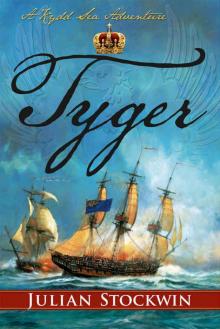 Tyger
Tyger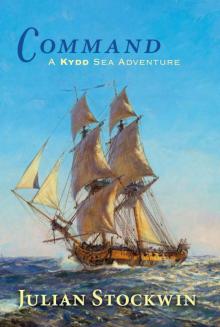 Command
Command Pasha
Pasha Artemis k-2
Artemis k-2 14-Caribbee: A Kydd Sea Adventure
14-Caribbee: A Kydd Sea Adventure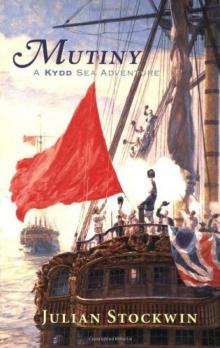 Mutiny - Kydd 04
Mutiny - Kydd 04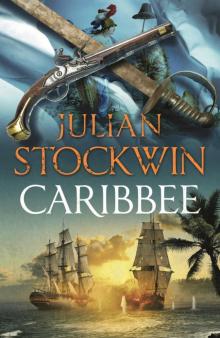 Caribbee
Caribbee Victory
Victory Quarterdeck
Quarterdeck Artemis - Kydd 02
Artemis - Kydd 02 The Powder of Death
The Powder of Death Conquest
Conquest Betrayal tk-13
Betrayal tk-13 Stockwin's Maritime Miscellany
Stockwin's Maritime Miscellany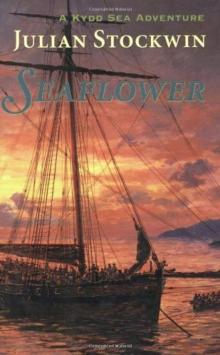 Seaflower: A Kydd Novel
Seaflower: A Kydd Novel Mutiny
Mutiny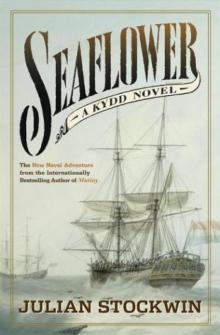 Seaflower k-3
Seaflower k-3 Seaflower
Seaflower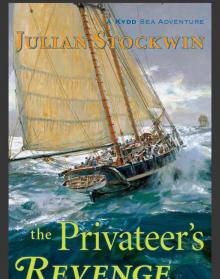 The Privateer's Revenge
The Privateer's Revenge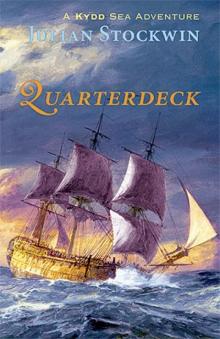 Quarterdeck: A Kydd Sea Adventure
Quarterdeck: A Kydd Sea Adventure Kydd
Kydd Artemis
Artemis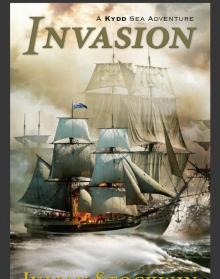 Invasion
Invasion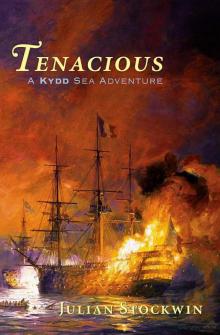 Tenacious
Tenacious 06 - Tenacious
06 - Tenacious The Silk Tree
The Silk Tree